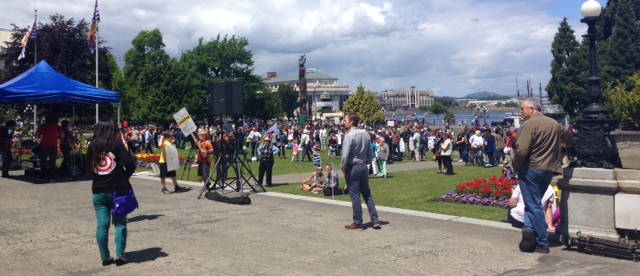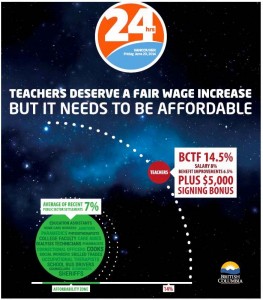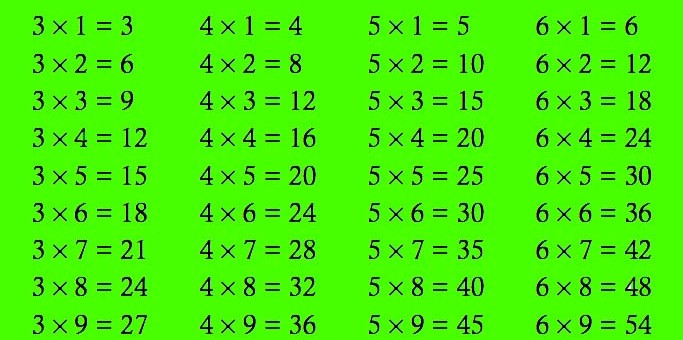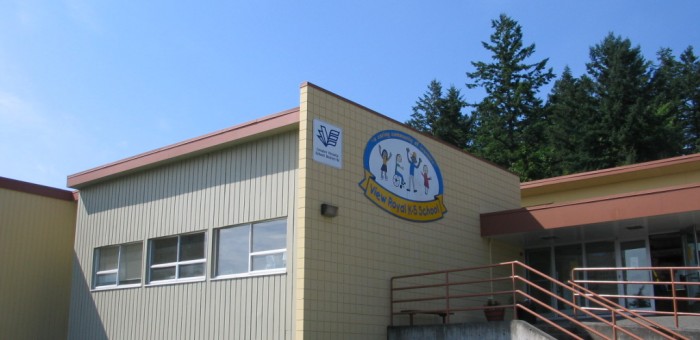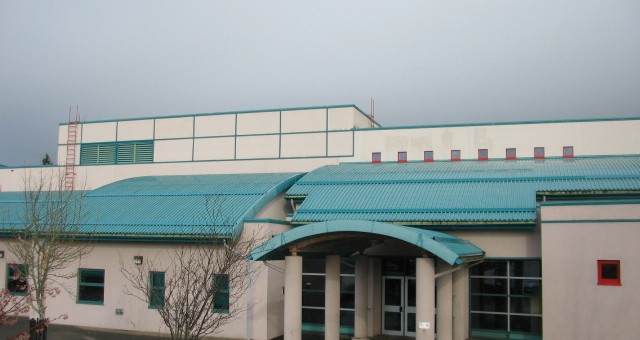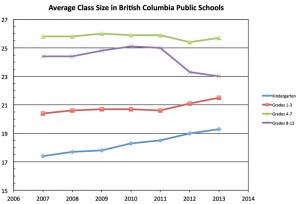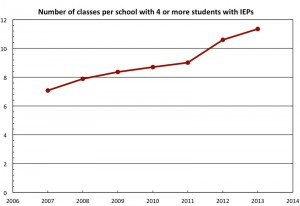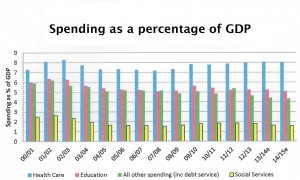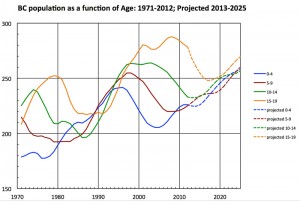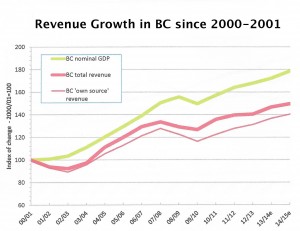Search results for: BCTF
Government Corrects Math, Needs Lesson on Communication
In an earlier post, I took a look at the math in an ad that the BC Government placed on the the front page of 24 Hours Vancouver. In the ad the government suggested that teachers were asking for an 8% increase in salary and a 6.5% increase in benefits for a total 14.5% increase. As I pointed out, you cannot add percentages and benefits that are typically closely related to salary.
What the government was not saying is that the 6.5% was not actually benefits. Rather, it was their assessment of what the costs would be to implement the BCTF proposal. The BC Public School Employers’ Association has publicly released their costing 0f the BCTF proposal. In addition, the BC government advertisement has revised their advertisement to eliminate the breakdown of the 14.5% into 8% salary and 6.5% benefits.
Initial Advertisement New Advertisement
Let’s take a close look at the government position. First, please let me reiterate. I am dismayed at the approach that seems to be occurring with respect to negotiation via press release and media statement. That is certainly not how I would expect respectful negotiations to proceed.
The BCPSEA costed summary table is reproduced below. In it, BCPSEA present their offer to the teachers and the BCTF demands of government. Most reasonable people would read this and wonder why the government’s position is an offer and the teachers’ position is a demand. It strikes me as an unfortunate choice of words that certainly does not aid in bringing parties together.
 So what’s actually in the teachers’ so-called compensation demands? Further inspection of the BCPSEA costing reveals the following:
So what’s actually in the teachers’ so-called compensation demands? Further inspection of the BCPSEA costing reveals the following:
Teachers’ Proposed Wage Increase
- July 1, 2014: 3.5% increase
- July 1, 2015: 1.5% increase
- July 1, 2016: 1.5% increase
- July 1, 2017: 1.5% increase
If a teacher’s current salary is T, then on July 1, 2017 it would be (assuming no change in seniority):
T × 1.035 × 1.015 × 1.015 × 1.015 = T × 1.082
That is, the teacher’s salary would increase by 8.2% (not 8%). Someone forgot to compound the increase in the original ad above while taking great care to use two significant figures to represent benefit increases.
And when you take closer look at the BCPSEA release they state this: Total Compensation is defined as all wages, wage-impacted benefits, and non- wage impacted benefits
It turns out that more than half of the “6.5% benefit improvements”, reported in the initial advertisement shown above, is to provide elementary school teachers with enhanced preparation time. This strikes me as a “working condition” not a “benefit” . Obviously I recognize that there are costs associated with improving working conditions, but to call this a”benefit” is a bit of a stretch.
Finally, I think it’s time for the government to pull back from attaching value added rhetoric and spin in its communication with the public about the ongoing negotiations with the BC teachers. Teaching is perhaps the most important profession in our society. After all, each and every one of us has attended school and that experience has shaped who we are, what we do and how we contribute to society. And let’s not hide behind the “it’s not affordable” mantra. Government is tasked with making choices. As I mentioned in another earlier post, education funding as a percentage of the provincial GDP has declined from a high of about 6.4% in 2001-2002 to an estimated low of about 5.0% in 2014-2015 (a decline of about 22%). If British Columbians deem education to be as important as I do, surely this drop needs to be rectified.
So are the BCTF and government really that far apart in terms of their positions? I think not. I am hopeful that with the timely appointment of a mediator, a negotiated settlement could be reached fairly quickly. But it’s important to put politics and historical differences aside. After all, our children are the next generation and it behoves us as a society to treat their education seriously.
Interview with Gregor Craigie – On The Island, CBC Radio, Victoria – June 24th, 2014
Teachers need fair wage increase & government needs lesson in math
Today Vincent Ready announced that he had too many commitments to take on the position as mediator in the labour dispute involving teachers and the government via their negotiating arm BCPSEA. This comes on the heels of a full page ad being taken out by the BC Government in 24 Hours Vancouver on Friday, June 20.
In an amazing twist of irony, the ad is also found on the “Province of British Columbia’s official Education and Literacy page” on Facebook.
While the ad is certainly compelling visually, there’s a rather fundamental mathematical problem with the government’s calculations. I think most British Columbians would agree that “Teachers deserve a fair wage increase. But it needs to be affordable”. But when the government makes such an elementary mistake in their calculation, it makes one rather suspicious of other claims that they might be making.
Let’s do a little mathematics.
Suppose that the total amount of money spent on teacher salaries in the province of British Columbia is: S
Suppose that the total amount of money spent on teacher benefits (pension, health, dental, disability etc) is: B
Benefits are almost always assigned as a percentage p of total salary so that:
(1) B = p × S
Then the present total compensation T0 to teachers including benefits is:
(2) T0 = S + B = S + p × S = (1 + p) × S
In the advertisement, the government says the teachers are asking for an 8% salary increase (over 5 years) and a 6.5% improvement in their benefits.
So by the end of the 5 year agreement the total compensation T5 to teachers would be:
(3) T5 = T0 + 0.08 × S + 0.065 × p × S = (1 + p) × S + 0.08 × S + 0.065 × p × S = (1.08 + 1.065 × p) × S
We can get a pretty good idea of the ttotal amount of money spent on teacher salaries and benefits in the Province of British Columbia from the Ministry of Education website. Table 6 of the BC School District Expenditure and Revenue Tables notes that in 2013/14, a total of $3,125,629,458 was spent on all teacher salaries combined and a total of $792,384,192 was spent on total benefits. Benefits therefore represent 25% of the salary costs so:
(4) p = 0.25
Now when we plug p from Equation 4 into Equations 2 and 3 we get:
(5) T0 = 1.25 × S
and
(6) T5 = 1.35 × S
The ratio of T5 to T0 gives us the overall compensation increased proposed by the BCTF.
(7) T5 / T0 = 1.08
The proposed teacher wage increase is 8.0% increase over 5 years when the overall package is considered (including benefits). How could this number be so different from the government’s number in the above advertisement? Well the answer is simple, the BC Government added the 8% salary increase to the 6.5% benefit increase to get their 14.5% overall increase. Their math is just plain wrong and frankly I think they owe the general public, let alone the teachers, an apology for misleading them particularly in light of the fact that funds for the advertisement probably arose from public money. In addition, it is embarrassing, to say the least, to see this advertisement proudly displayed on the official BC Education and Literacy Facebook page.
Now, more than ever, it is important for the Liberal government to find a mediator to bring rationality back into the negotiations. I think we can all agree that teacher’s need a fair wage increase but at the same time, it’s pretty clear to me that government could use a lesson or two in math. Our children, their parents and the teachers in the classroom deserve better.
Andrew Weaver calls on government to agree to independent mediation in teacher labour dispute
Media Statement: June 19, 2014
Andrew Weaver calls on government to agree to independent mediation in teacher labour dispute
For Immediate Release
Victoria B.C. – Today’s call for independent mediation by the BCTF represents an important opportunity to depoliticize the current labour dispute. Minister of Education Peter Fassbender has noted that he is open to the idea. Now it’s time for both sides to work hard to make it happen.
“It is hard to imagine how a settlement could be reached before the end of the month if this opportunity to introduce an independent meditator is not accepted” said Andrew Weaver. “I think British Columbians are tired of the negotiation-by-press conference that has been taking place, which does little but polarize discussions.”
While introducing a mediator is by no means a silver bullet for settling the labour dispute, it would represent a significant step in improving the dialogue between the two parties.
“While the negotiators battle out their entrenched, and what is perceived by many to be, at times, ideological positions, the ones who are paying the price are the children in the classroom, the teachers who teach them, and their parents at home” said Andrew Weaver. “The government set the stage for the crisis with their intransigent position regarding class size and composition negotiations in the face of two BC Supreme Court decisions. Now they have an opportunity to be a critical part in the solution.”
Media Contact – Andrew Weaver MLA
Mat Wright – Press Secretary
1 250 216 3382
mat.wright@leg.bc.ca
A Path Forward for BC Public Education
Preamble
I’ve been asked by quite a few people to weigh in on the present escalation of tension between the Government of British Columbia and the British Columbia Teacher’s Federation (BCTF). I have resisted the temptation to do so while negotiations were ongoing, but with their complete breakdown and the imminent threat of rotating strike action and punitive penalties against teachers, I felt it both timely and important to do so.
First off, let’s make something clear. I have always believed that teaching is perhaps the most important profession in any society. Each and every one of us has attended school and that experience has shaped who we are, what we do and how we contribute to society.
Teaching is a thoroughly rewarding yet physically and emotionally exhausting job. It takes a very special sort of person to be able to instruct a class of 20-30 young children for five hours every day. Just last week I spent the day engaging every grade from Kindergarten to grade 6 at Savory Elementary’s 4 Seasons Eco School (4EST) Program. I only had one lesson plan to deliver to the seven separate classes (from 08:45 to 2:30). I had no marking to take home, no report cards to write, no parents to interact with and no staff meetings or administrative activities. Nor did I have to take students on extracurricular activities. I was exhausted at the end of the day. And I only did that once, not day in, day out for many months.
Right now there is an impasse between the BC Government and the BC Teachers Federation. Like any troubled marriage, it is ultimately the children who are hurt in the bickering and squabbling. But unlike a family breakup, there are 558,985 public school students affected. Divorce is simply not an option.
As it stands, the BC Government through the Public School Employers’ Association (BCPSEA) appears to be acting like a schoolyard bully. In a letter to BCTF, BCPSEA outlined punitive 5% wage cuts for all BCTF members starting Monday, May 26 and 10% wage cuts as soon as rotating strikes start. This sort of ‘bust the union’ response of the government is almost certainly going to backfire. It will be viewed as inflammatory, disrespectful and spiteful.
But at the same time, the BCTF demands for $646 million in salary and benefit increases, representing a 21.5% overall increase in four years, is widely viewed as outrageous. The public appears to be behind the teachers’ wishes to be able to negotiate class size and composition, but all semblance of sympathy is lost when wage increases are sought that are out of step with every other public sector employee group.
So how can we move forward from here? Below I provide some background and ideas that might contribute to the ongoing public debate. Obviously there is an immediate crisis that needs to be dealt with. But there is also the subsequent reparation of the damaged relationship between the BCTF and the government that needs to be addressed.
Part 1: The background
Class size and composition
In 2002, shortly after the BC Liberals came to power, two bills were introduced (Bills 27 and 28) that removed the ability of class size and composition to be negotiated under provincial bargaining. The BCTF successfully challenged these in court and in April 2011 Madam Justice Susan Griffin ruled that it was unconstitutional for teachers not to be allowed to negotiate aspects of their working conditions. In response, the government introduced a new Bill (Bill 22, The Education Improvement Act) that the BCTF once more successfully argued did not allow them to negotiate class size and composition. On January 27, 2014 “The B.C. Supreme Court ruled that the province must retroactively restore class size and composition language that was removed from teachers’ contracts in 2002, and pay the B.C. Teachers Federation $2 million in damages.” This decision is presently under appeal.
Let’s take a closer look at the class size and composition data. These data are available in pdf format on the BC Ministry of Education website.
First, what is apparent from the data is that there is incredible variation across the province. For example, in 2013-2014 the average class size in grades 8-12 in the Campbell River School District (#72) was 25.9; the average class size in the Central Coast School District (#49) was 11.3. Averaged over the whole province, class sizes in kindergarten to grade three have been on the rise, where as overall class sizes in grades 8-12 have been on the decline (Figure 1). As noted below, these trends reflect BC demographics.
Figure 1: Average class size in BC public schools from 2007 to 2013. The year corresponds to the start of the school year so 2013 represents the 2013-2014 school year. Source: BC Ministry of Education.
As in the case for class size, class composition varies greatly from school to school and district to district. But what is very clear is that teachers are being expected to handle more and more students with special needs (Figure 2). Ministerial Order M638/95 defines the term Individual Education Plan (IEP) which “A board must ensure … is designed for a student with special needs, as soon as practical after the student is so identified by the board.” From 2007 to 2013 there has been a 57% increase in the total number of classes containing four or more students with IEPs in the province. This corresponds to a 60% increase in the number of such classes per school. In 2013-2014 a total of 16,163 classes out of a total of 68,020 classes (24%) in British Columbia public schools contained four or more students with IEPs.
Figure 2: Average number of classes in a school with four or more students with individual education plans. The year corresponds to the start of the school year so 2013 represents the 2013-2014 school year. Source: BC Ministry of Education.
Not everyone believes that the BCTF and the province should negotiate class size and composition. The Victoria Confederation of Parent Advisory Councils recently suggested that it was “inherently discriminatory”.
Education funding
The level of funding allocated to our public education system depends on the priorities of the government. As indicated in Figure 3 below, spending on health care has remained a priority since 2000, ranging between 7 and 8% of provincial GDP. Funding for social services and education expressed as a percentage of GDP, on the other hand, has dropped over this period of time. In the case of education, one might argue that declining student enrollment has led to some of the overall decline in resource allocation.
Figure 3: BC Government spending as a percentage of GDP from fiscal year 2000-01 to 2014-15. The ‘e’ means estimated. Sources: 2014 and prior BC budgets, The BC Financial and Economic review (2013 and earlier), 2013 Fiscal reference Tables (from the Federal Department of Finance), BC Stats and Statistics Canada.
Figure 4 illustrates the population in BC from 1971-2012 and estimated from 2013-2025. In all age brackets relevant to school age children, the population has indeed dropped. But what’s important is that the minimum in the 0-4 age bracket occurred in 2005 and the minimum in the 5-9 age bracket occurred from 2007-2008. The population in both of these age brackets has started to rise, and this is reflected in the increasing class sizes for K-3 in Figure 1 above. All school age demographics are also expected to rise for at least the next decade. This further suggests that while we may have an excess of teachers being trained today, in three or four years, as the teacher demographic ages and as the number of school age children starts to increase, we will likely have teacher shortages, particularly in areas of French immersion, mathematics and science where demand exceeds supply.
Figure 4: BC population from 1971-2012 and projected population from 2013-2025 for four different age brackets. Blue (0 to 4); Red (5 to 9); Green (10 to 14); Orange (15-19). The solid line is recorded population and the dashed line is projected population. Source: BC Stats.
Provincial Revenue
As I mentioned above, education funding as a percentage of the provincial GDP has declined from a high of about 6.4% in 2001-2002 to an estimated low of about 5.0% in 2014-2015 (a decline of about 22%). If British Columbians deem education to be as important as I do, surely this drop needs to be rectified. The question is, where would the money come from?
Figure 5 shows both revenue and GDP growth relative to 2000-2001. Revenue to the province has not kept up with GDP growth. Over the last decade, there has been a general tendency to reduce both corporate, small business and personal income tax rates. For example, as of January 1, 2014 British Columbia has the second lowest general corporation active business income tax rates in the country at 11.0%.
Figure 5: BC GDP and Revenue since 2000-2001. The thick red line indicates revenue including federal transfer payments. The thin red line excludes federal transfer payments. Sources: 2014 and prior BC budgets, The BC Financial and Economic review (2013 and earlier), 2013 Fiscal reference Tables (from the Federal Department of Finance), BC Stats and Statistics Canada.
British Columbia on the International Scene
Every three years the Programme for International Student Assessment (PISA) evaluates the performance of students internationally in three subject areas: mathematics, science and reading. The Council of Ministers of Education, Canada further breaks down the Canadian results on a province-by-province basis. British Columbia consistently performs extremely well. In 2012, for example, British Columbia was the top Canadian province in reading and science and was second only to Quebec in mathematics. In fact, British Columbia students even performed better than students from the much touted education system in Finland in reading and mathematics. While Finland scored slightly ahead of BC in science, the difference was statistically insignificant.
I recognize that the PISA results only provide one metric of student achievement and hence the success of the British Columbia school system. Nevertheless it is a very positive one. It says to me that we must be doing something right in British Columbia despite what we might read about in the news. It also suggests to me that maybe we should start to celebrate our successes and dwell less on the negative arising from the dysfunctional relationship between the BC Government and the BCTF.
Part II. A way forward
In light of the above information, I’ll explore a number of ideas that we might consider in moving forward. First, there is a short-term crisis that needs to be addressed. This in turn must set the stage for a resolution of the longstanding dysfunctional relationship between the BCTF and the BC Government.
In the short term
The Liberal government set the stage for the crisis we are now facing by raising unrealistic expectations with its election campaign rhetoric about reaching a ten-year deal with teachers. Their intransigent position regarding class size and composition in the face of two BC Supreme Court decisions and their punitive actions with respect to teacher job action does little to move us forward.
Perhaps there is a compromise. Why don’t the BCTF and the BC Government both agree that the best place to negotiate class size and composition is at the local school district level? In fact, as noted in the book Worlds Apart: British Columbia Schools, Politics and Labour Relations Before and After 1972 by Thomas Fleming, the BCTF was not pleased with the 1994 Public Education Labour Relations Act which led to the formation of BCPSEA and the BCTF being appointed as the official bargainer for all teachers. Provincial data also clearly show that one size does not fill all. The class size and composition needs of Haida Gwaii School District (#50) are almost certainly different from those in the Gulf Islands (#64) or Surrey (#36) School Districts.
Perhaps both parties would also agree to binding arbitration with respect to salary and benefit negotiations. Binding arbitration forces each party to come up with their best offer. The arbitrator then chooses from one of them. One thing is certain, outlandish requests are taken off the table quickly when binding arbitration is in play.
Failing the above, one might imagine a mediated yet negotiated settlement where BCPSEA and the BCTF agree to a short term, say three to four year, contract in line with what other public sectors have received. In addition, BCPSEA could offer up substantial resources to hire new teachers to reduce the very valid class size and composition concerns of the BCTF.
While the negotiators battle out their entrenched, and what is perceived to be, ideological positions, the ones who are paying the price are the children in the classroom and the teachers who teach them. As adults, we cannot ask our children to behave one way then turn around and behave exactly the opposite ourselves. Right now it seems like both the government and the BCTF have picked up their bats and balls and left everyone else stranded on the field wondering what they can do.
In the long term
(i) It is clear that British Columbians need to take a hard look at our sources of provincial revenue and the way we spend the money that government receives. Given a decade of corporate and personal income tax cuts, perhaps its time to take a look at whether or not we have gone too far. This is an important discussion to have as it ultimately affects the availability of funds for our public education system. With increases in public school enrollment looming, it’s critical that we initiate this discussion sooner rather than later.
(ii) The BCPSEA was established in 1994. Since that time there has been a continued escalation of conflict between the BCTF and the BCPSEA. Perhaps it’s time to consider dismantling BCPSEA and instead bringing its operations directly into the Ministry of Education. This would signal that government is willing to start afresh to try and build a new relationship. After all, it is the government, and not BCPSEA, that holds the purse strings.
(iii) Perhaps its time too to reconsider the role of School Boards in our public education system. Thomas Fleming in his aforementioned book noted “…a history of extremely low voter turnout in school board elections, along with the influence of teacher associations over electoral candidates, has raised serious questions about whether boards, in fact, actually reflect the public’s educational will, or simply serve as a platform for the expression of various special interests — all insistent on greater school spending, regardless of other legitimate public demands government is obliged to consider” (page 109). He further points out that only between 5 and 10% of eligible voters turn up at school board elections not occurring at the same time as municipal elections. And he detailed a recent by-election in the Capital Regional District that brought out around only 2% of the electorate.
(iv) As we move forward there will be a teacher shortages emerging in a few years as projected enrollments increase. Rather than perpetuate the boom and bust cycle of teacher training and hiring, and rather than keeping people for many years on the teacher-on-call list, perhaps a more gradual transition to full time employment could be developed.
Teacher burnout early on in one’s career is not uncommon. A young teacher might be thrown into a new situation with multiple class preparations for a range of students with a diversity of skills and background. With no past teaching material or practices to draw upon, new teachers can quickly become overwhelmed with the workload. Senior teachers approaching retirement, on the other hand, have a wealth of experience, curriculum resources, and best practices. Perhaps it is possible to negotiate a buddy system where a retiring teach signs an agreement to retire gradually over, say, a three year period. During that time a starting teacher is paired with the retiring teacher. So while the senior teacher gently eases into retirement the new teacher gently eases into full time teaching. And the decades of experience and best practices are passed along from the senior to the junior teacher.
(v) And finally, perhaps there are innovative ways that would allow school districts to build upon best practices of shared services. Perhaps the government could play a role here and provide the province with a centralized payroll system. Does each district need to have its own payroll department? Should teachers be employed by the Ministry of Education instead of the Board? Are there opportunities for economies of scale?
I am not advocating for any of the above, but rather putting out some ideas in the hope that a discussion ensues. Building a social license for change requires uncomfortable topics and new ideas to be discussed.
The status quo between the BCTF and BCPSEA cannot continue. The politicization of our public system serves no constructive purpose. We have outstanding and dedicated teachers in the province of British Columbia.
To the BCTF and BCPSEA I say this. Pick up your bats and balls and get back to the field. You owe it to our teachers and our children.

